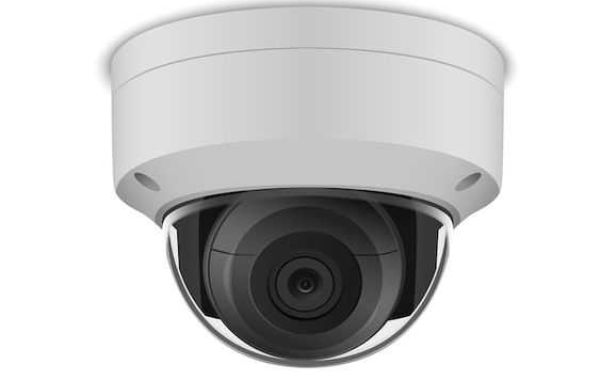The use of surveillance cameras in office environments has become increasingly common as businesses prioritize security, operational efficiency, and accountability. Office surveillance cameras, once mainly used to prevent theft or vandalism, now serve a broader range of purposes. From safeguarding company assets to monitoring employee performance, these systems are shaping the modern workplace.
However, the rise of office surveillance has sparked important debates surrounding privacy, workplace trust, and ethical use. Companies must navigate these challenges carefully to balance the benefits of surveillance with the rights of their employees.
Purposes of Office Surveillance Cameras
Office surveillance cameras can serve a variety of functions, depending on the needs and objectives of the business. Common reasons for installing surveillance systems in the workplace include:
Security and Asset Protection: Surveillance cameras in offices help protect company property, sensitive data, and equipment. They deter theft, vandalism, and unauthorized access, particularly in areas where valuable or confidential materials are stored.
Employee Safety: Cameras in lobbies, parking lots, and other high-traffic areas can help ensure the safety of employees and visitors. In case of an emergency or a security breach, footage from these cameras can assist in identifying threats and responding quickly.
Monitoring Workplace Conduct: Office surveillance is often used to monitor employee behavior and adherence to company policies. This includes ensuring that employees comply with safety protocols, ethical standards, and performance expectations. For example, cameras can be placed in warehouses or production areas to ensure employees are following safety procedures.
Productivity and Performance Oversight: Surveillance can be used to track attendance, productivity, and time management. Managers may use cameras to monitor how employees spend their time at work, ensuring that company resources are being used efficiently.
Investigating Incidents: When conflicts or accidents occur, surveillance footage provides a reliable record of events. This can help resolve disputes between employees or clarify the circumstances of workplace accidents, leading to more informed decision-making.
Technological Advances in Office Surveillance
The technological sophistication of office surveillance systems has evolved dramatically in recent years. Many systems now include features such as:
Facial Recognition: This allows security teams to identify individuals and track their movements throughout the office, enhancing access control and security.
Motion Detection: Cameras equipped with motion sensors can detect unusual activity, such as unauthorized access to restricted areas or movement after office hours, triggering alerts for security personnel.
Cloud Storage: Modern systems store footage securely in the cloud, making it easier to retrieve and analyze recordings as needed. Cloud storage also reduces the risk of losing important data due to equipment failure.
AI-Enhanced Analytics: Artificial intelligence can now be used to analyze surveillance footage, flagging suspicious activity or detecting patterns that might indicate a security risk or productivity issue.
These technological advances have increased the effectiveness of surveillance systems in offices, providing businesses with more detailed and actionable information.
Legal and Ethical Considerations
While office surveillance offers clear benefits, it also raises significant legal and ethical concerns. Employers must ensure that their use of cameras complies with privacy laws and respects the rights of employees. Some of the key legal and ethical considerations include:
Employee Consent: In many jurisdictions, employers are required to inform employees about the presence of surveillance cameras in the workplace. Consent is often required before cameras are installed, and employees must be made aware of where cameras are located and what they are being used for.
Limitations on Monitoring: Privacy laws generally prohibit the use of cameras in certain areas, such as bathrooms, locker rooms, or other private spaces. Surveillance should also not be used to monitor employees’ personal communications or non-work-related activities.
Data Protection: Footage captured by surveillance cameras is considered personal data, which means businesses must comply with data protection regulations, such as the General Data Protection Regulation (GDPR) in the European Union. Employers are required to secure footage, limit access to it, and delete it when no longer needed.
Transparency: Ethical concerns arise when employees feel that surveillance is intrusive or used to unfairly micromanage their behavior. Companies should be transparent about the purpose of surveillance, how data will be used, and who has access to it.
Balancing Surveillance with Employee Trust
One of the biggest challenges of office surveillance is maintaining a healthy level of trust between employers and employees. If employees feel that they are being excessively monitored, it can lead to a sense of distrust, lower morale, and reduced productivity.
To strike the right balance, businesses should consider the following:
Clear Communication: Employers should communicate openly with employees about why surveillance is being implemented and how it will benefit the workplace. Emphasizing security, safety, and fair monitoring can help build trust.
Focus on Specific Goals: Rather than monitoring every aspect of employee behavior, employers should use cameras strategically to address specific security concerns or performance issues. This limits the feeling of over-surveillance and ensures the system is used for legitimate purposes.
Provide Safeguards: Establishing policies that protect employees’ rights, such as limiting access to surveillance footage and ensuring it is only used for legitimate purposes, can help ease concerns. Allowing employees to voice their concerns about surveillance practices is also crucial.
Benefits of Office Surveillance Cameras
When implemented properly, office surveillance systems offer several important benefits:
Improved Security: Cameras help deter theft, protect sensitive information, and ensure that employees and visitors are safe.
Increased Accountability: Surveillance holds employees accountable for their actions, discouraging misconduct and promoting adherence to company policies.
Enhanced Productivity: By monitoring key areas of the workplace, companies can identify inefficiencies and improve workflow. This can lead to better performance and resource management.
Dispute Resolution: Surveillance footage provides an objective record that can be used to resolve conflicts between employees or between employees and management.
Challenges and Drawbacks
While office surveillance has its advantages, there are also drawbacks that businesses need to address:
Invasion of Privacy: If not carefully regulated, surveillance can make employees feel that their privacy is being violated, especially if cameras are used inappropriately or placed in areas where employees expect privacy.
Decreased Morale: Excessive surveillance can create a culture of distrust, leading to lower job satisfaction and higher turnover rates. Employees may feel stressed or uncomfortable knowing they are being constantly watched.
Legal Risks: Non-compliance with privacy laws or data protection regulations can result in legal penalties, fines, and reputational damage for the business.
Conclusion
Office surveillance cameras are powerful tools for enhancing security, improving productivity, and maintaining accountability in the workplace. However, businesses must navigate the ethical and legal challenges of surveillance to ensure that these systems do not infringe on employee privacy or erode trust. By implementing surveillance thoughtfully, with clear communication and safeguards in place, companies can leverage the benefits of surveillance while maintaining a positive and respectful work environment.








